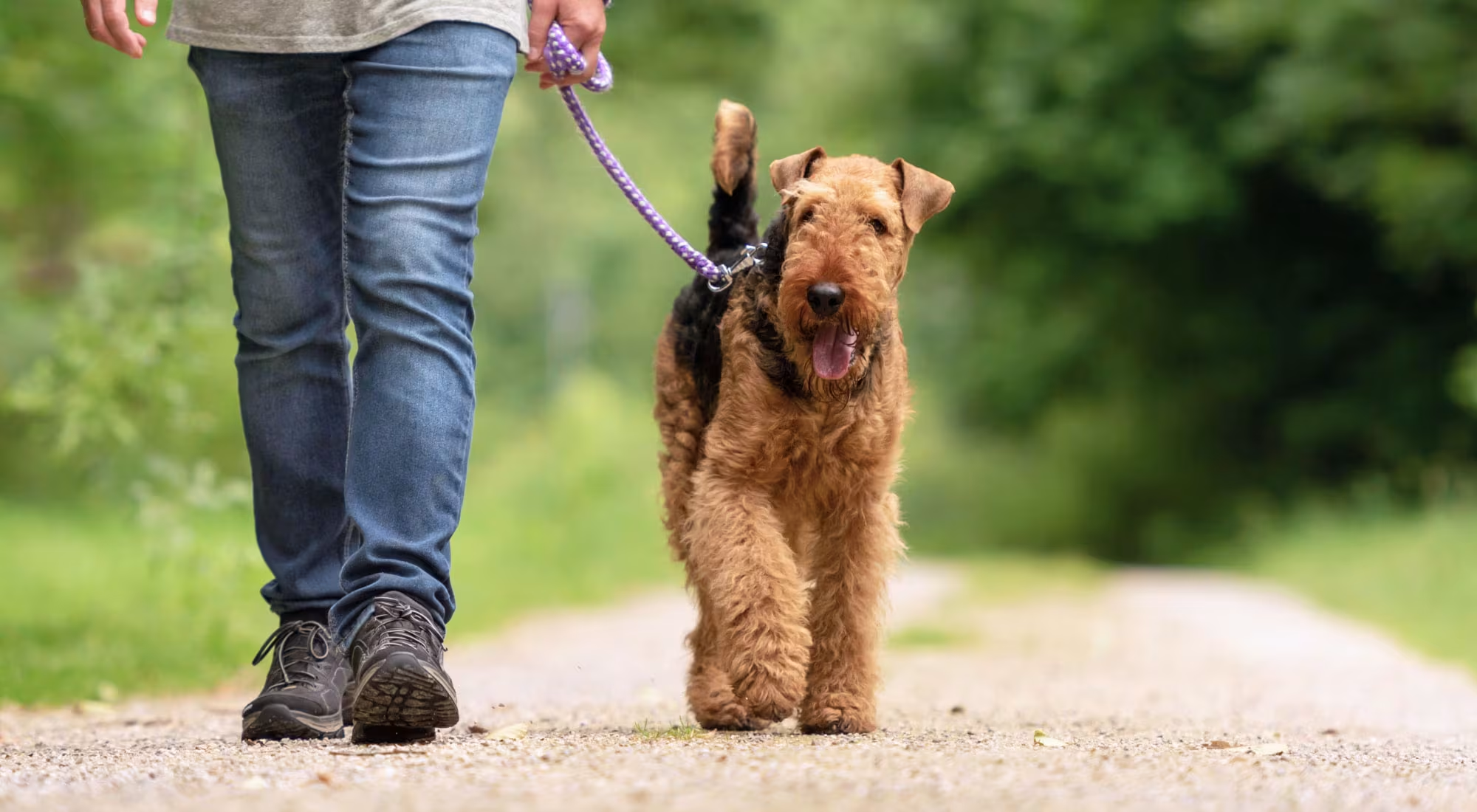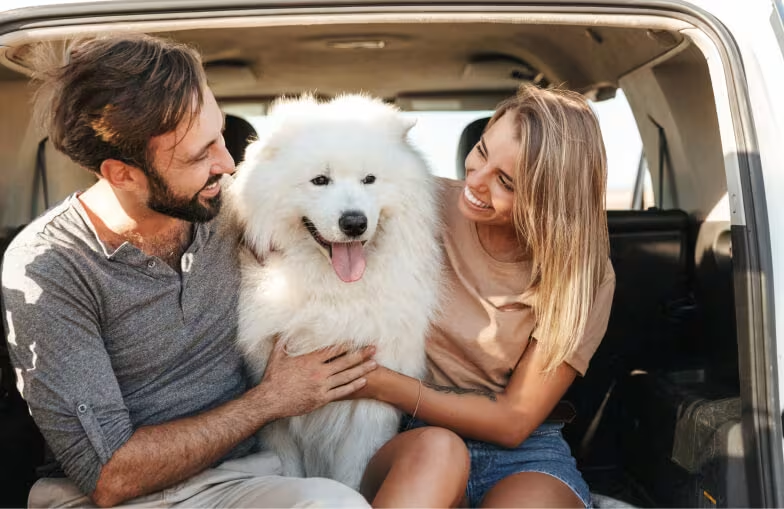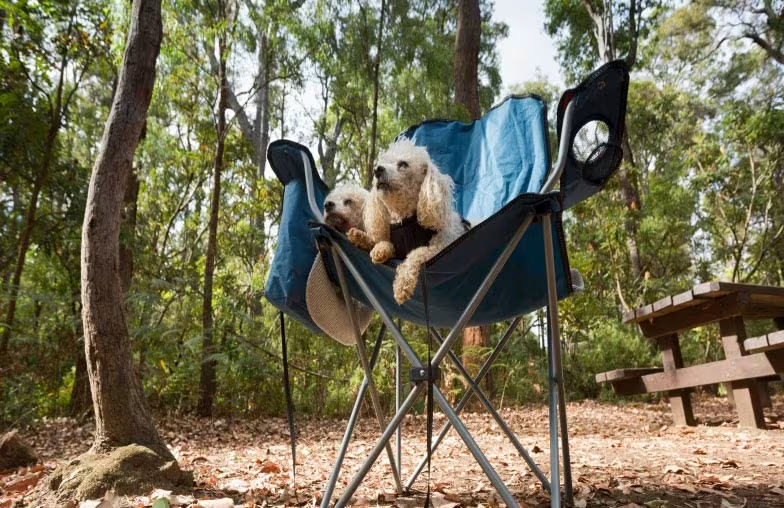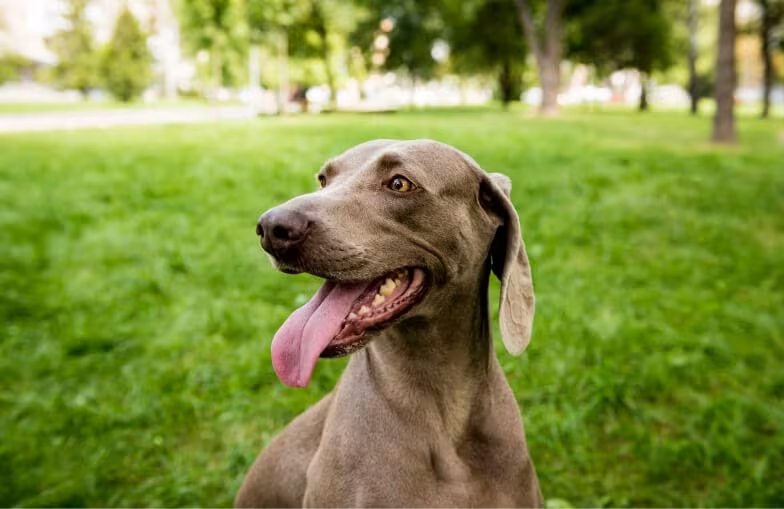How to avoid all the things that can go wrong on a pet road trip

When we talk about travelling with our pets, usually the mishaps and misadventures are recounted first. In reality, though, most road trips taken with dogs and cats can go off without a hitch. All that's required is a little preparation — and maybe a lesson or two gleaned from other people's mistakes.
Note: the names of the pets in this article have been altered to protect their privacy (and save their humans from complete and utter embarrassment).
The twists and turns of motion sickness
How comfortable a pet feels (or doesn't) on a road trip will tremendously affect how smoothly your travel together goes.
Both dogs and cats like their routines and because travel is typically a novelty, elements of the familiar need to be in place to make them feel safe, as well as reduce their anxiety throughout the trip.
Set up your backseat with beds, favourite blankets, and cuddly toys that all have the smell of home. Small dogs will appreciate a booster seat that lets them look out the window to see the passing scenery.

Motion sickness in dogs is usually something they outgrow by the time they are 1 year old, says veterinarians Tammy Hunter and Ernest Ward. A cat or dog's nausea while travelling is often related to fear and anxiety, and "overwhelming unusual stimuli associated with moving inside a vehicle."
Amy Pike, manager of the Pet Valu store in Belle River, ON, travels with three dogs on the regular, and says feeding time will make no difference with motion sickness.
"With dogs that get carsick, it doesn't matter if they eat before, during or after — they're going to be sick," she says.
Just ask Penny, a three-year-old Wheaten mix whose anxiety over car travel came up frequently. And literally. Thinking she could avoid an upset stomach incident, her human decided they'd skip breakfast in favour of some water and anti-nausea medication coated in peanut butter. Two hours later, Penny, her pet parent, and the car's passenger side dashboard were all treated to an impressively forceful splash of undigested peanut butter water.
True story.
While natural anti-anxiety remedies and prescription medications do exist, the best way to overcome car sickness is through conditioning.
As with any other type of training, you want to practice being in the car, rewarding bravery with praise and treats while slowly increasing the amount of exposure (e.g. sitting in a parked car, sitting in a parked car while it's running, sitting in a car moving up and down a driveway, and so on).

Gimme a break!
Not only will a break give your dog time to do that cute butt-in-the-air stretch thing they've trademarked, it'll also break up their day to mimic the sleep schedule they follow at home. Naturally, bathroom breaks should line up with the number and frequency they require on a non-travel day (the same goes for snack breaks and meals).
Remember that roadside rest stops are busy, high-traffic areas that are unfamiliar to your pet. Be sure to leash dogs before opening doors and have their lead firmly in hand at all times.
Small dogs are best carried to grassy areas for their breaks since it can be hard for drivers to see them (especially those who are desperate for a bathroom break themselves).
Road tripping with multiple dogs? Pike recommends rotating breaks. "Just like if you had multiple kids, you can't take all three of them in the bathroom stall with you at the same time."
In this case, Pike suggests walking one dog at a time, while the other stays in the car.
For cats, a travel litter box is needed for longer trips. Ensure the box can fit inside their cat carrier. In this case, it'll need to be larger than the carrier you use to take your cat back and forth to the vet, and a crate can work well. Ideally, you'll want to make sure your kitty gets frequent stops to ensure they get a stretch and a bathroom break.
Pack litter from home and a litter attractant if you're concerned that kitty may not like to do his business is this new setup.
For Tuna, an orange tabby who loves summers at the cottage but does not love the eight-hour process of getting there, absorbent training pads were required since his brand of protest is to boycott his travel litter facilities.

What to do if your dog gets skunked
Skunks spray as a defence strategy when they are scared or startled. While your first instinct might be to put your dog in the car and get him to a bathtub, you want to avoid that if possible. Traces of the skunk oils are hard to get rid of, and will linger in your car for a long time after.
If your dog is sprayed by a skunk, follow these steps:
Check their eyes because skunk spray can act like tear gas. Look for redness, irritation, or squinting. Flushing your dog's eyes with sterile water or pet-grade eye wash is recommended.
Check for any other signs of injury.
Put on a pair of gloves to keep the smell off your hands, and soak up the spray with paper towels. If you're a planner, you can pre-pack a bottle of skunk odour remover or shampoo in your car to help.
Spray or lather your dog and let it sit for five to 10 minutes before rinsing. Repeat this step until the smell is gone and then dry off your doggo.
Being sprayed by a skunk can be stressful for your dog, so lots of treats can bring down anxiety levels and make cleanup more calming.
If symptoms are extreme, a trip to the vet may be required for professional care and peace of mind.

Raccoons can't read
Pike recalls a "rookie mistake" on the first camping trip with her pup, when she left the dog food outside her tent — only to realize she'd made friends with a family of raccoons, in the middle of the night.
Her dog, who has requested anonymity, attempted to dissuade the freeloaders from making off with the food (which was clearly marked with the words “dog” and did not feature the word "raccoon" anywhere on the packaging, not even in the small print).
Knowing there was just a flimsy tent wall between her and the thieves, the dog attempted to tear through it. "At least I was smart enough to leave her leash on and I stopped her from doing that," Pike laughs.
The lesson here is that whether you're bringing a pet on a camping trip or a hotel stay, your pet is going to require more attention than they might at home. Leashes are a lifesaver on road trips and so is proper identification worn at all times.
If sleeping in tents isn't your vibe, there are two things you can do: 1) Frame your pet as the fussy one; and 2) Go ahead and book that hotel room.
More and more hotels are finding ways to accommodate four-legged guests, but before making a reservation be sure to ask if there's a pet surcharge or a limit to how large a pet can be. Most hotels don't allow dogs to be left alone in the room so be sure to plan around that — or just use it as an excuse to order room service.









































